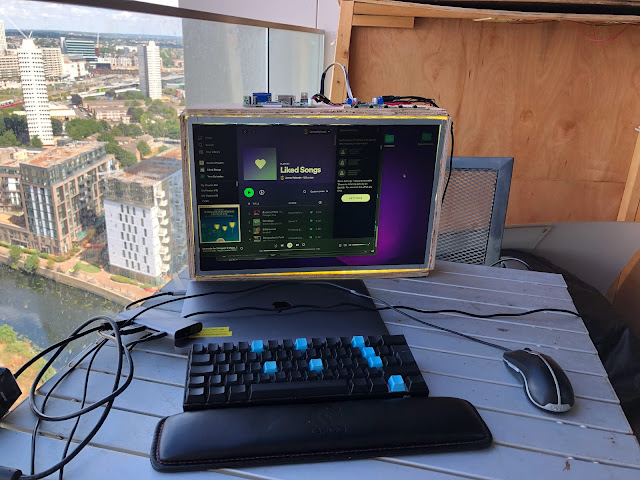Tablecloth analogy for Quantum mechanics
I have always found the question of where particles come from hard to ignore.
It’s a question Feynmen struggled to answer when his father asked him.*
I recently read a book; Something Deeply Hidden, whose author, Sean Carroll advocates the many-worlds interpretation of quantum mechanics. In his opinion, many-worlds satisfies Occam's razor by being the simplest interpretation. He argues that because the equations of quantum mechanics can be interpreted directly with no additions for the no collapse of the wave function by an observer. He argues that the many-worlds interpretation doesn't need to explain the observer problem because it isn't there. By requiring nothing more than the fundamental equations themself the interpretation is the simplest.
You might question here that if there is no collapse of the wave function when an observation takes place, why do we see an experimental difference between when (taking the double-slit experiment as an example) we observe one slit to see which side the entity (wave/particle) traverses through before hitting the back pane.
Why do we observe a collapse of the wave nature of the particle? In Something Deeply Hidden Sean Carroll advocates the position that because the measuring device is a part of the world it cannot be taken separately from the particle it is observing. The observer then becomes entangled with an experiment. If the observer is some measuring device when the measuring device is observed by a human, the particles of the human become entangled with the system. This leads to a splitting of the world. In each resulting world, a possible outcome of the experiment is observed.
Talking these ideas through with a friend he pointed out that perhaps a breakdown of our intuitions of reality and accepting many worlds exist, many versions of yourself exist is less simple than the ideas behind decoherence. Although Occam's razor on the models would lead to choosing many-worlds because the model is simpler. The simplest conceptual model is perhaps not the one which requires such a change to our perception of reality.
I guess it comes down to how you define simple?
You could define it in terms of computational complexity as Sabine Hossenfelder suggests in Lost in Math. She suggests the idea rather flippantly suggesting it more as an example of a better direction than simply looking for mathematical beauty.
One of the ideas that Sean pushes is that particles are themselves interpretations of particular formations within the fields. The fields themselves being fundamental.
He doesn’t use the tablecloth analogy in the book but it seems to fit with both the idea that fields are fundamental and the question of how one particle can become two.
Although the tablecloth is a continuous sheet much like a field, I have no issue naming and pointing at the creases in it. They seem to have an existence of their own. You can push them around the table and more importantly for the question of particle creation you can split a crease into two.
I seem to have no intuitive issue with one crease becoming two on a tablecloth. There isn’t really the question of where did this second crease come from. Much like when two creases merge there isn’t the question of where did one of them go.
I now think this is a reasonable analogy for how particles exist and cease to exist. It’s important not to take this analogy too far, the height of the crease certainly doesn’t represent energy, even if at first glance it seems to have its own conservation law.
I guess the first law of tablecloths is “The sum of the arc length of the creases is constant”.
This is only the case in a tablecloth world where the tablecloth is fixed at the edges of the table.
* According to The Pleasure of Finding Things Out - Richard P. Feynman When Feynman graduated his father asked him about the photo creation when an electron drops an energy level, "Where does the photon come from?"



Comments
Post a Comment